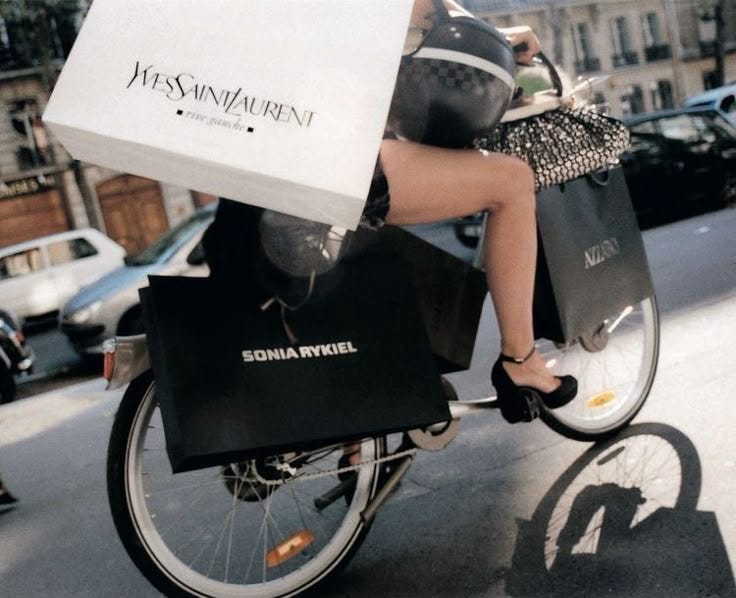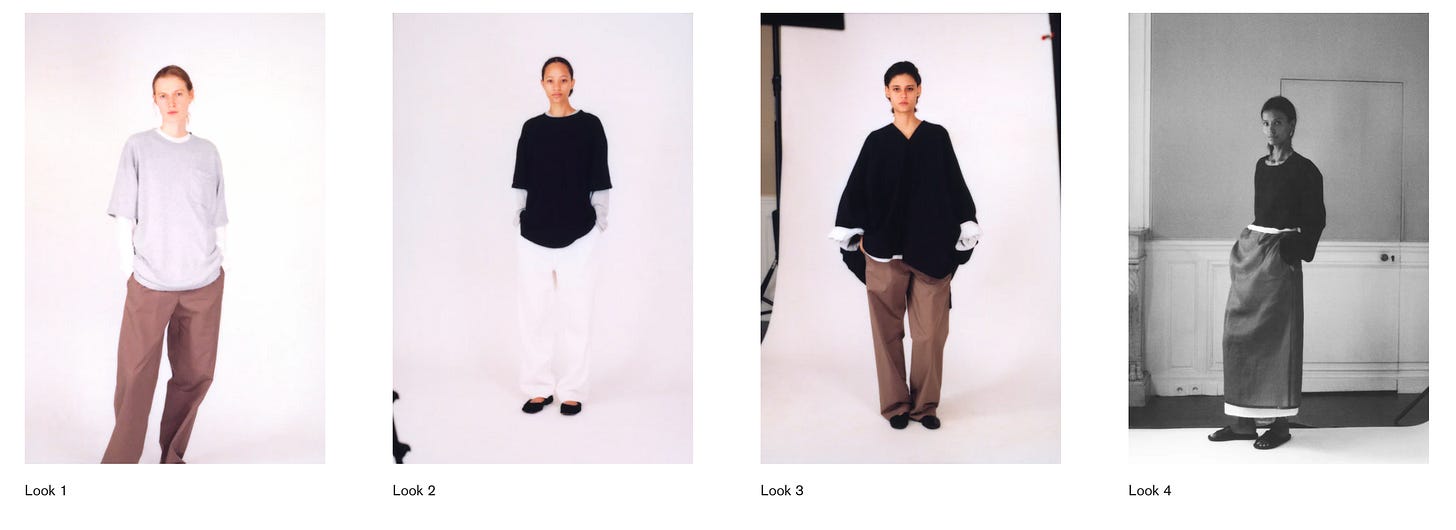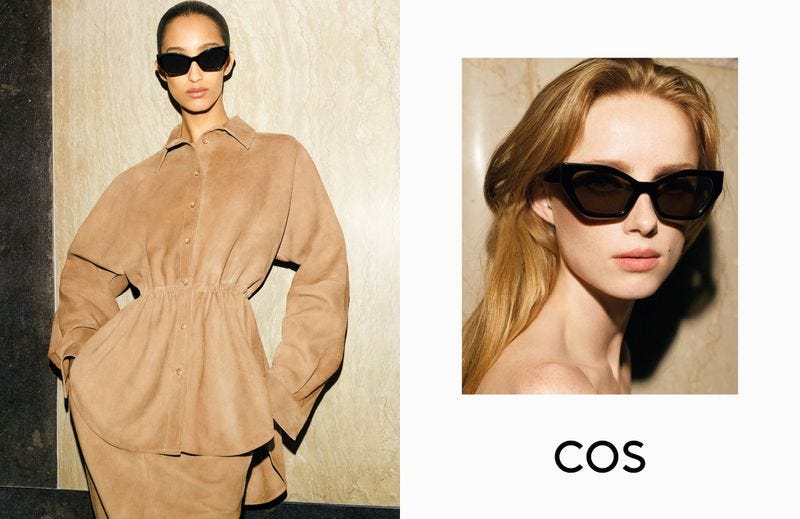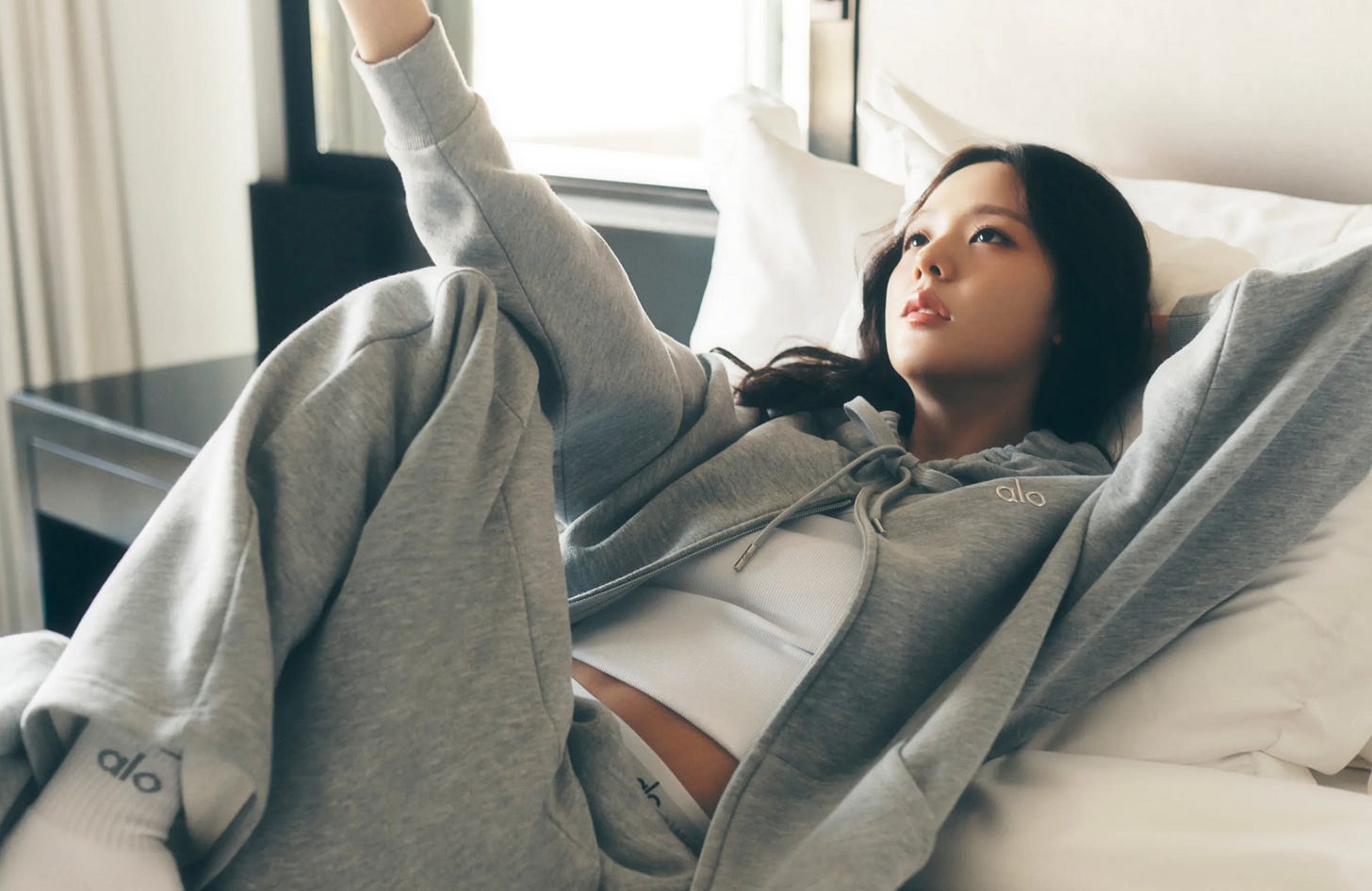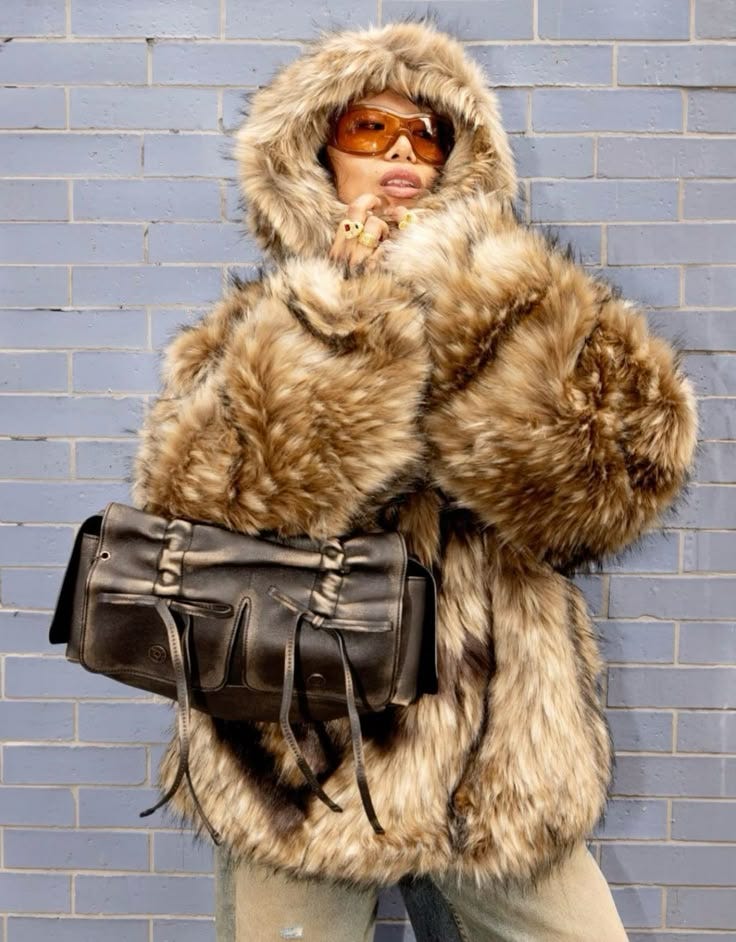PLT or Prada? How Self-Concept Shapes the Way We Shop
It's no secret that the way we see ourselves plays a role in how we carry ourselves, the decisions that we make and the lives we lead. Even the clothes we choose to wear can reflect this perception back to us. Fashion is often used as a form of self-expression, so when we curate outfits, whether with intention or not, we send out certain messages to the world.
Physical aspects of clothing like quality and price are not the sole drivers of making a purchase. Whether it’s loving quiet luxury, the ‘clean girl’ aesthetic or wearing logos, upon logos, upon logos, the clothes we put on have the ability to portray an identity, a lifestyle or even a dream reality. These intangible factors, coupled with our self-concept, play a significant role in determining the brands we gravitate towards and the choices we make in fashion.
The Many Faces of ‘Self’
Let’s begin with self-concept— or self-perception. It’s an overarching term to describe the image we hold of ourselves eg. “I’m a creative genius” or “I’m a kind person”. It’s composed of three interconnected factors: the ideal self, self image, and self-esteem.
The ideal self is an amalgamation of the person we want to be or our ‘highest self’ as some may say. Self-image refers to our current self, who we perceive ourselves to be at this very moment. Finally, self-esteem contributes to how positive or negative our self-concept is. The level of self-esteem we experience is affected by how close we think we match up to our ideal self.1 If we feel the distance between who we are and who we want to be is too vast, it can lead to a dip in self-esteem. This lack of alignment, or self-incongruence, can affect many aspects of our lives, including the way we shop.
Self-concept is fluid, and it can be reshaped at any point in life. Through positive relationships and unconditional love, we can always grow and transform. No one is ever stuck in a negative cycle forever.
Now that we’ve got the definitions out of the way, we can begin how fashion comes into all of this.
Cognitive consistency is Key
In a world where appearance can be everything, it is not surprising some individuals turn to fashion as a way of fitting in, gaining approval or projecting a certain lifestyle. As consumers, we prefer purchasing from brands that coincide with the views we have of ourself, whether positive or negative. This is likely because of our innate drive to maintain harmony between our thoughts and behaviours— a phenomenon known as cognitive consistency2.
A person with a high congruency between their ideal self and self-image that perceives themselves as lowkey or laid-back may choose to shop from subtle luxury brands like the Row or COS. Both produce fluid silhouettes, neutral tones and promote a quiet confidence through timeless styles.
The Row is also known for it’s silent and elusive marketing strategy (no billboards, influencer campaigns, celebrity partnerships), with their Instagram looking more like an artist’s mood-board than a luxury fashion brand.
While they don’t follow the quiet marketing strategy of the Row, COS utilises soft lighting and neutral, modern settings in their campaigns and runway shows, creating a soft sense of ease.
However, when theres an incongruence between our self-image and ideal self, clothing is consumed in a different way. Fashion starts to be used as a bridge to close the gap between the two selves. So, while a congruent self-concept leads us to buy from brands that align with who we are, an incongruent one leads us to buy clothes that align with who we wish we were.
Take someone who’s ideal self is fit and athletic, prioritising their health through the gym or Pilates classes. Yet their current self has to sit at a desk for 8 hours a day and then only has the energy to doom-scroll through social media after. To the human mind, this massive incongruence is the worst possible thing that could happen. We crave harmony and consistency between our thoughts and behaviours and will do what we can to fix it as soon as we can. It’s therefore unsurprising if this individual, who is not really known for their athletic prowess, begins sporting a Lululemon define jacket or an Alo sweatsuit set. This alignment, although surface level, has lessened the gap between their current self and ideal-self. The person can now experience greater cognitive consistency, a congruence in self-concept and mental peace.
Also, regarding Alo and Lululemon, it’s not entirely the consumers fault for wearing activewear even though they don’t work out. These brands market a certain lifestyle that goes beyond the gym, and social media trends, like the ‘pilates princess’ or ‘clean girl’ aesthetic, further promote the clothing as everyday loungewear.
The Importance of Self-Esteem
Self-respect, self-worth, self-regard, self-esteem. These are all interchangeable descriptions for the value we assign to ourselves based on our confidence in our abilities. Self-esteem, which is what I’ll refer to it from now on, is always based on self-evaluation rather than any objective, external factors. A healthy self-esteem can boost motivation, mental well-being, and overall quality of life. But the human experience is far from perfect. Self-esteem is largely shaped by life experiences, which we can’t always control. If these experiences disrupt the balance, self-esteem can tip too high or too low, affecting how we see ourselves and interact with the world.
How Low Self-Esteem Influences Fashion Choices and Consumption
Viewing the world through the lens of low self-esteem can lead to self-doubt, reduced confidence, increased worry, people-pleasing tendencies, and a generally pessimistic outlook on the future.
Here, fashion consumption often stems from a need for external validation rather than self-expression or identity reinforcement. The desire for social acceptance becomes the driving force behind purchasing decisions.3 People with low self-esteem are more likely to gravitate toward fashion ads featuring their favorite celebrities or influencers.4 The appeal isn’t just the clothes—it’s the lifestyle, the confidence, the aura. Buying into these endorsements isn’t just about style; it’s about stepping closer to an idealised version of themselves.
Take Rhode for example. Their marketing capitalises on Hailey Bieber’s “clean girl” aesthetic, making it aspirational for consumers who associate her look with effortless beauty and success. Many buy into the brand not just for the product but to emulate her lifestyle.
This process, known as impression management, suggests that individuals strategically choose clothing to shape how they are perceived. For some, getting dressed is second nature. For others, it’s an elaborate game of dress-up designed to impress an invisible audience. Luxury fashion, in particular, plays a key role in impression management due to its association with exclusivity, status, and a desirable lifestyle.
However, the emergence of luxury dupes and exact replicas in fast fashion highlights how the desire to project a particular image can extend beyond the price tag. Ever wonder why some people drop £2,000 on a bag, while others find a near-identical version for £20 and call it a day? The answer isn’t just about money, it’s about identity, perception, and, sometimes, a little self-doubt.
When someone lacks the financial means to buy into luxury but still craves the status it provides, fast fashion brands like Shein and AliExpress step in to fill the gap. These platforms don't just create “inspired” versions of designer pieces, they often produce exact replicas, making luxury aesthetics accessible at a fraction of the price. For example, the Miu Miu Wander Bag quickly found itself duplicated on Shein, AliExpress and the gate, offering the same silhouette, hardware details, and even logo placements.
Similarly, fake Cartier Love Bracelets and Van Cleef Alhambra necklaces became viral sensations because people wanted to signal wealth and status on social media without spending thousands. This trend highlights how fashion, for some, becomes less about personal expression and more about curating an image that aligns with aspirational lifestyles.
Shein and AliExpress thrive on this need for validation, making it easier than ever to “try on” a luxury identity without real commitment. In this sense, impression management isn’t just about clothing choices, it’s also about the psychology behind why people seek out designer dupes in the first place. For those with lower self-esteem, the reassurance of looking the part can feel just as valuable as actually being part of the luxury world.
That being said, psychology doesn’t always provide a one-size-fits-all explanation. While low self-esteem can be a factor in why someone might seek out status-driven fashion, it’s not the only reason. Not everyone who buys into a certain aesthetic is doing so for external validation. Sometimes, people just genuinely love the design of a Miu Miu Wander Bag but can't justify the price tag. In other cases, purchasing a dupe can be a way to experiment with trends before committing to the real thing. Fashion is deeply personal, and while psychology can help explain certain patterns, it can’t dictate the intentions behind every purchase.
Using Fashion to Align with Our Ideal Self
While it's clear that low self-esteem can lead to fashion consumption driven by external validation, it's also worth noting that fashion marketing can play a positive role in shaping our identities. Fashion brands don't just sell clothes—they sell identities. This allows us to project a version of ourselves we feel confident in or aspire to be. Think about how you’d dress for a job interview compared to a night out with friends. In each case, your outfit is carefully chosen to communicate something specific about who you are (or want to be). Brands that market through identities make it easier for us to communicate these nuances without having to say a word.
When Fashion Elevates Confidence
Fashion, when chosen consciously, can also serve as a tool for boosting self-esteem. When I wear an outfit that truly represents who I am—or even the person I aspire to be—I feel a noticeable boost in my confidence. It’s as if the clothes unlock a version of myself I can’t always access. Suddenly, I’m more energised, eager to connect with new people, and more at ease with being my authentic self, with no reservations about how I’m being perceived. I’m certainly not the only one who has felt this shift. Research has shown that when there’s consistency between our self-image and what we wear, it has a powerful effect on our self-esteem.5 This boost encourages individuals to continue enhancing their self-image through fashion6, taking pride in their clothing and appearance.7
One powerful example of fashion's ability to enhance self-esteem can be seen through stylist @stylingwithkenzie on social media. Kenzie works with individuals to completely transform their personal style, aligning their wardrobe with the identity they aspire to project. The before-and-after photos show a striking difference, not only in the way the clients look but in their confidence. Their smiles are brighter, their posture is more confident, and they seem to embrace a version of themselves that feels more authentic and empowering.
By choosing to wear clothing that makes us feel good and resonates with our personal identity, we can elevate our self-esteem. Fashion instead becomes a tool for self-empowerment, helping us not only communicate who we are to the world but also affirming our self-worth in our own eyes.
In conclusion…
Through the lens of self-concept, fashion consumption can be viewed as a tool for either identity protection or enhancement, depending on the strength of an individual’s sense of self. People consume fashion not only to fit in with a specific social group but also to enhance their self-identity and become the person they aspire to be.
Cherry, K. (2024). What is Self Concept? Very Well Mind.
Festinger, L. (1957). A theory of cognitive dissonance. Stanford University Press.
Isaksen, K. & Roper, S. (2012). The commodification of self-esteem: branding and British teenagers. Psychology and Marketing, 29(3), 117-135.
Solomon, M. (2017). Consumer Behaviour: Buying, Having, and Being. Pearson Education.
Sirgy, J.M. (1982), Self-concept in consumer behaviour: a critical review. Journal of Consumer Research, 9(3), 287-299.
Stuppy, A., Mead, N.L., & Van Osselaer, S. (2019). I am, therefore I buy: Low self-esteem and the pursuit of self-verifying consumption. Journal of Consumer Research, 46, 956- 972.
Solomon, M. & Rabolt, N.J. (2008). Consumer Behavior in Fashion. Pearson Education.



